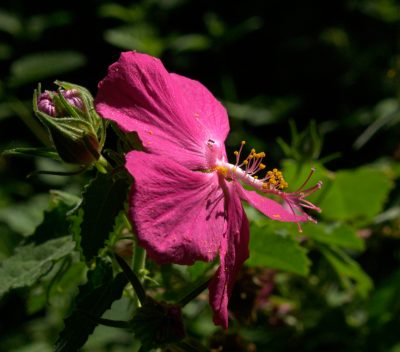My tree looks bad. What should I do?
Our question this week comes from Drew, who has a suffering cedar elm tree. The tree was native to the lot when his house was built a few years ago, and was one of the reasons that he chose to buy the house. But after the drought set in, the tree seemed to struggle, putting on fewer leaves each year.
He wants to know if the tree is a hazard and should be cut down.
The wounds on the side of his tree occurred a very long time ago and the tree has healed the best it can. There are some holes, likely caused by borers, in the heart wood, but these also are old wounds.
What happened here: Trees growing in nature normally grow much more closely to their neighbors than they do in a landscape, where we plant them all alone. So in nature, trees tend to be thinner and taller than they do when we plant them in wide open areas, with lots of space and no nearby competition for sunlight.
When trees are cut down to build homes, but a few are left to enhance the appeal of the lot, the trees left behind may struggle with the removal of their neighbors. And if the root zone is not protected, heavy equipment can compact the soil and cause the tree to decline.
With Drew’s tree, there’s another complicating factor: mistletoe, which is a parasitic plant that will eventually kill the tree. The infestation of mistletoe here is quite thick, so I’m sorry to tell you, Drew, your cedar elm is not long for this world. But the good news is, it’s pretty small, so it shouldn’t be too hard to cut down. Small conciliation, I know.

 Benjamin Shrader
Benjamin Shrader Daphne Richards
Daphne Richards
 John Dromgoole
John Dromgoole